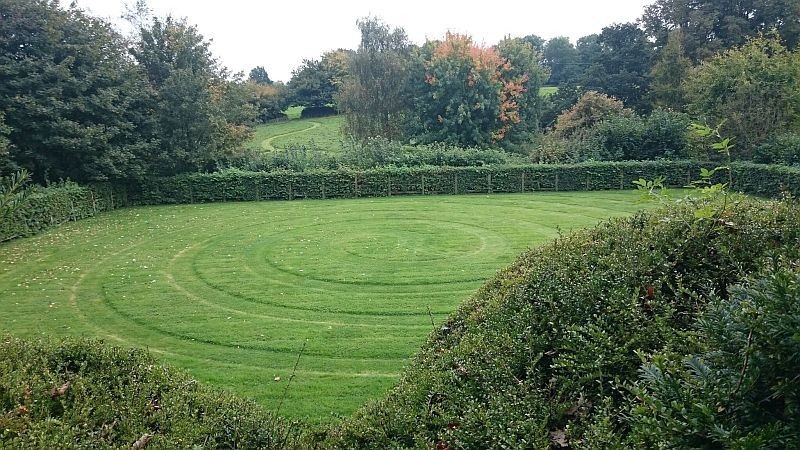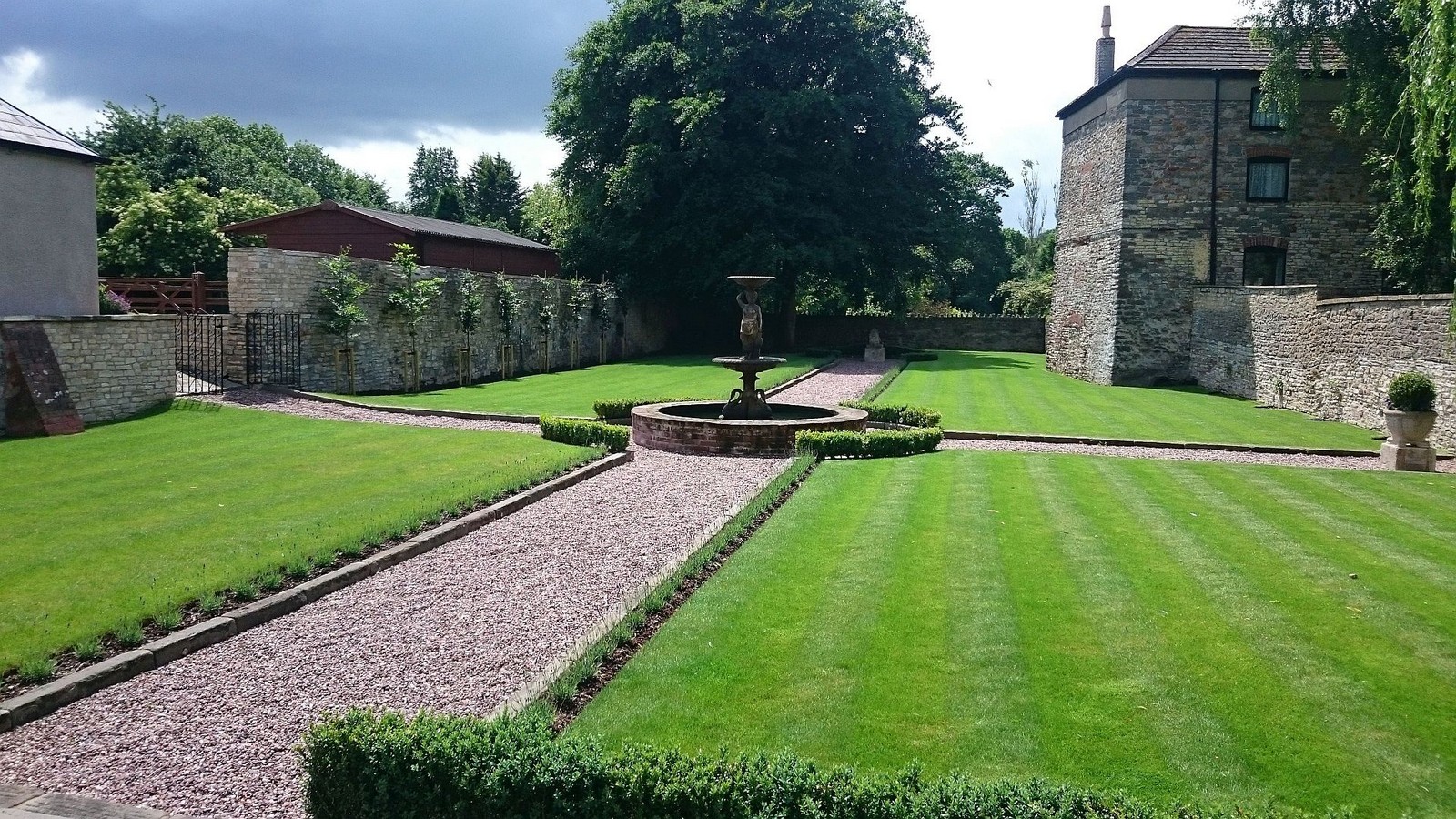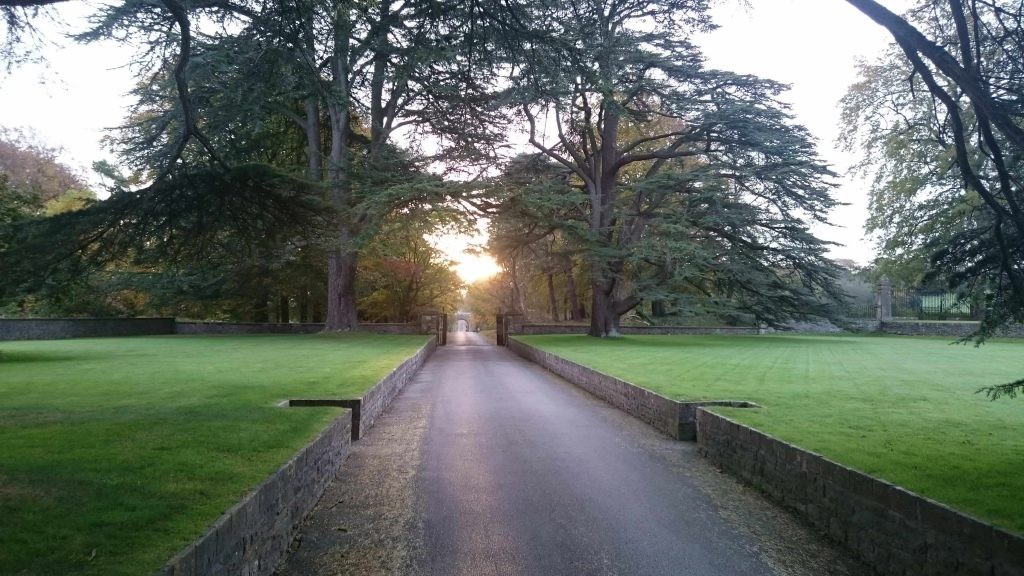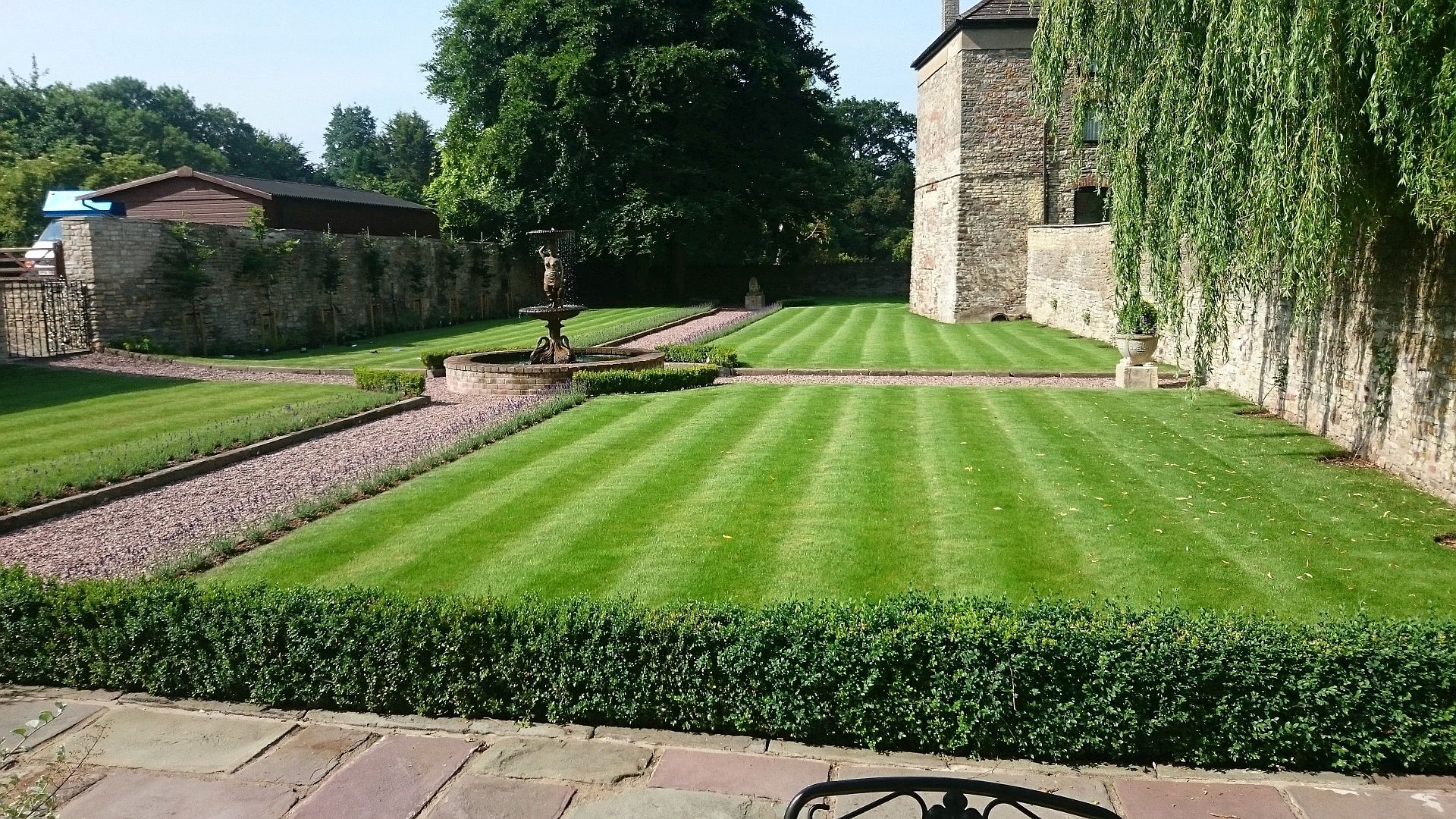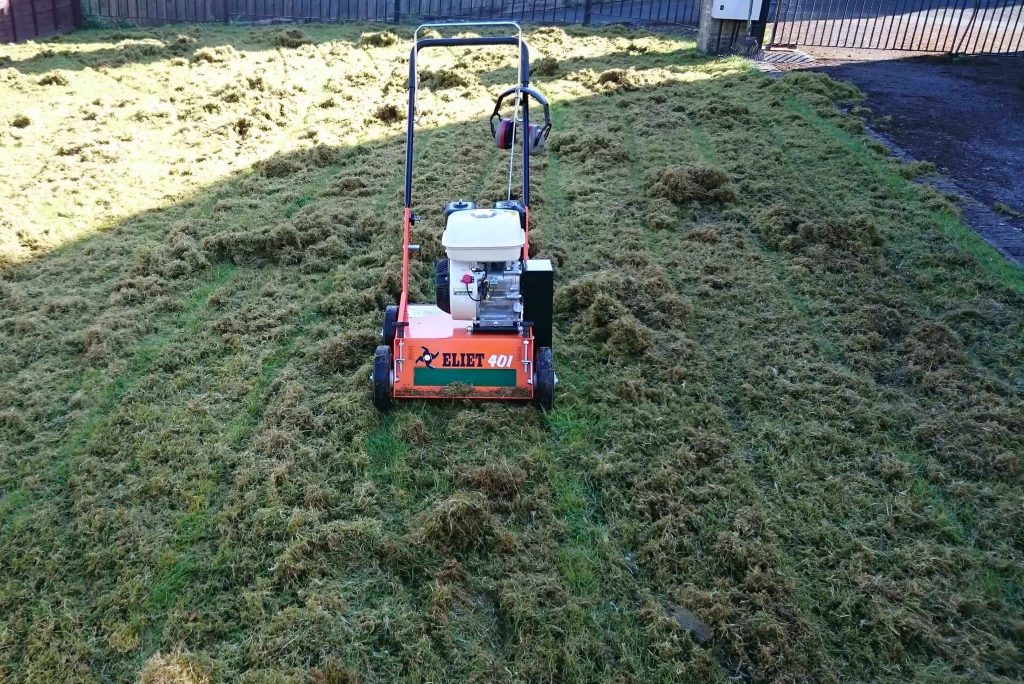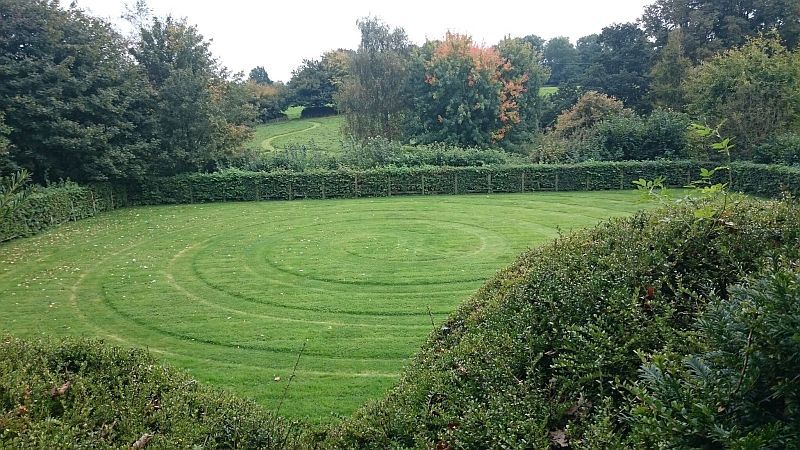Keep it simple, keep it regular.
An attractive healthy lawn, some bumblebees and the occasional daisy. Your rural idyll shattered by the deafening intervention of the hollow tine aerator, petrol driven scarifier, the all-terrain, all-weather mower, leaf blower and rotary spreader. A fearsome array of devices all part of the annual battle just to give the grass in your lawn the upper hand over moss, weeds, bare patches and the need for chemical stimulation.
Some lawns seem to get by with little attention, some need a bit more intervention. Like all gardening its down (in) to the soil. A hungry rye-grass lawn on a thin layer of top-soil over builders rubble is a very different creature to a thatch prone creeping fescue lawn over a deep fertile loam, each requiring maintenance tailored to their own specific characteristics.
Food, air and water. Like any living organism a lawn will thrive if given enough of these elements. An erratic overdose of stimulant (nameless high nitrogen feed and weed) will only exhaust the soils natural balance and resilience.
Slow release organic feed, seasonal scarification but first and foremost, regular cutting at a good, healthy height!
A Typical Annual Lawn Calendar
This can be tinkered with according to how demanding you and your particular lawn are but the basic routine can be as described below. I haven’t included any description of pesticide application for pests and diseases as an established lawn with a well-balanced ecosystem should survive, in the long run, most outbreaks. (Undying optimism and horrified lawn treatments companies up in arms everywhere).
Spring
Scarify
Thatch and moss can be treated at this time of year with physical removal, opening up the turf to air, water and the application of any granular nutrients (though also weed seeds so beware). Moss is best combated by developing the health and vigour of your grass sward, so after physically removing the moss (rake/scarify) feed the grass then re-seed any bare patches. Choose a suitable species of grass that will flourish in your prevailing conditions.
Top-dress & Over-seed
Spring and/or autumn are the traditional season for repairing bare patches and improving soil structure – essentially because any seedlings will be watered with the seasonal rainfall. In which case summer probably works as well.
Feed
The major nutrient requirements of grasses are generally of a nitrogen: phosphate: potassium ratio of NPK 2:1:1 so steer clear of those feeds that are high in nitrogen, over-stimulating top-growth and leading to a number of problems later on.
Summer
Feed
Many good lawn fertilisers will give you 8-12 weeks nutrition so calculate your 3 monthly feed cycle from the start of the season.
Autumn
Feed
Probably the last feed of the season – choose one with low or no nitrogen cf the potassium and phosphate content. The aim here is to provide good nutrients for root growth, and strengthen disease resistance to grass top growth.
Scarify
As with the spring treatment, light raking to open up the turf from too much.
Aerate
Some groundsman insist that of any routine treatment carried out on your lawns, aeration is the one not to be avoided. Going back to the principle of food, air and water, it is the process of aeration that facilitate all three of these essential elements. The choice of techniques is another discussion in itself! Like scarifying this can be carried out in the spring, but beware periods of drought as opening up the turf will make it more prone to drought.
moss or thatch. Whether spring or autumn, it’s down to the lawns ability to recover from any aggressive treatment.
Winter
A succession of mild winters, particularly here in the south west have meant the need for an occasional mow just to keep appearance up. Some aeration work can be done through core removal in waterlogged sites. Any works that may need repairs should be left to the growing season however.
….and its not always about straight lines:
